Will Still and Reims have had their fair share of publicity and praise over the last year — and rightfully so. On initially taking over as manager of Les Rouges et Blancs in mid-October with the club in 15th place on the league table and threatened with a relegation battle, Still led the team to an initial 14-game unbeaten run in all competitions, keeping the team performing to a high level throughout the rest of the season, guiding them to an eventual 11th place finish, well clear of the relegation zone.
Reims demonstrated some impressive recruitment work during the summer, experiencing a significant squad turnover but ultimately making a €10.5m net transfer profit, per Transfermarkt, while bringing in the likes of Mohamed Daramy from Eredivisie giants Ajax, Teddy Teuma from Belgian Pro League heavyweights Royale Union Saint-Gilloise and Oumar Diakité from Austrian Bundesliga champions Red Bull Salzburg.
At present, Still’s side sit sixth in Ligue 1, four points off the UEFA Champions League places. Furthermore, at the time of writing, they’ve scored 20 goals in 14 games — the third-best goalscoring record in France’s top-flight.
Set-piece expert here at Total Football Analysis, Karim El-shesheiny, went into detail on how Reims have benefitted from their training ground work on set-pieces this term, as he analysed their effective corner routines and the positive impact they’ve had on their goalscoring numbers in 2023/24 in his October set-piece analysis piece.
This tactical analysis and team-focused scout report will centre more on Reims’ attacking tactics and approach from open play, looking into the new dynamics Still has fostered within his flourishing team this season and how Les Rouges et Blancs are benefitting from this offensive system in which those aforementioned summer signings — Daramy, Teuma and Diakité — along with one of the previous summer’s savvy buys, Junya Ito, and, finally, Marshall Munetsi have proven to be key players.
Early possession phases: Establishing how Reims set up on the ball
Reims have utilised a few different formations this season out of possession. Earlier in the campaign, it was more common to see them playing with two centre-backs, primarily lining up in either a 4-3-3 or 4-2-3-1.
In more recent weeks, we’ve seen them shift to playing with three centre-backs off-the-ball, with some variation of a 3-5-2 being a regular sight.
On the ball, there’s been some common features of their approach regardless of their out-of-possession shape, along with some differences.
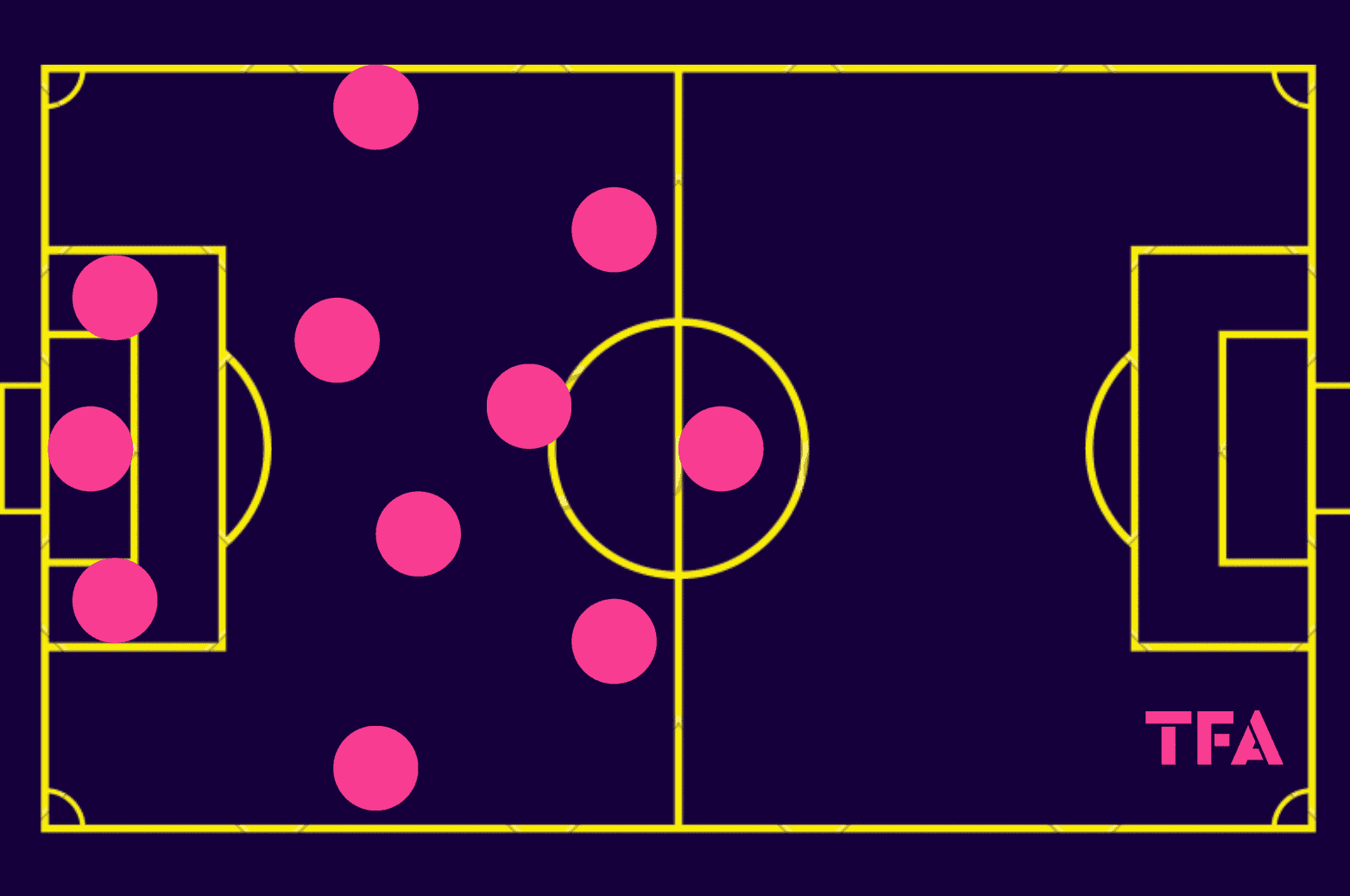
When playing with two centre-backs (4-3-3/4-2-3-1), it’s common to see Still’s side split them on either side of the goalkeeper in build-up while the full-backs sit a line higher, hugging the touchline on either side of the pitch.
We’ll see a staggered midfield with players sitting on different vertical and horizontal lines to aid ball progression, being more difficult to mark and creating more passing angles as a result of this positioning.
The deep midfielders have essential roles to play in the build-up and progression phases, as they will need to create decent passing options for the centre-backs or goalkeeper behind them. They need to find space in an often crowded midfield area and escape the opposition forwards’ cover shadows.
The full-backs also play a vital role here, as they will often have more space to work with than the central midfielders. As a result, they’re often the targets of the goalkeeper/centre-backs or even the central midfielders should they receive unable to turn on the ball and go forward themselves or play forward through the middle.
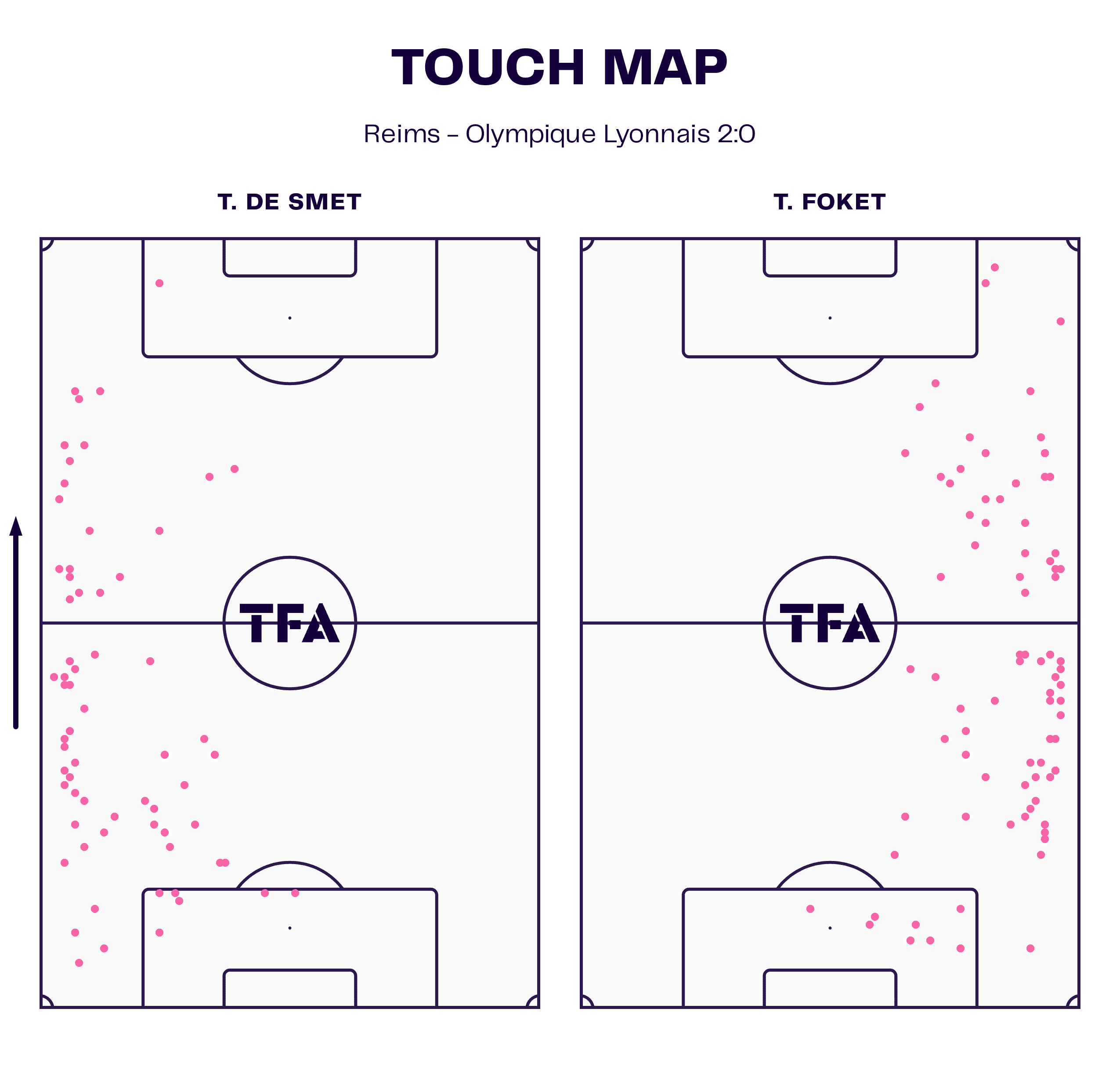
Figure 2 shows the respective touch maps of left-back Thibault De Smet and right-back Thomas Foket from Reims’ 2-0 win over Lyon earlier this season. These touch maps highlight some key aspects of both players’ respective roles within Still’s side.
Firstly, it’s clear both full-backs are required to contribute inside the opposition’s half, providing an outlet in these advanced positions. However, that’s a far greater part of Foket’s role than De Smet’s.
Foket is much more comfortable getting forward and attacking, making runs in behind, dribbling at opposition defenders and finding space within the final third to receive and either split the opposition’s defence open or cross into the danger zone.
De Smet will do this at times, but he’s also very comfortable inverting and playing more centrally, helping out in the initial build-up by providing an additional presence in the middle of the park, receiving to feet from the centre-backs or midfielders and looking to progress from one of those valuable central positions.
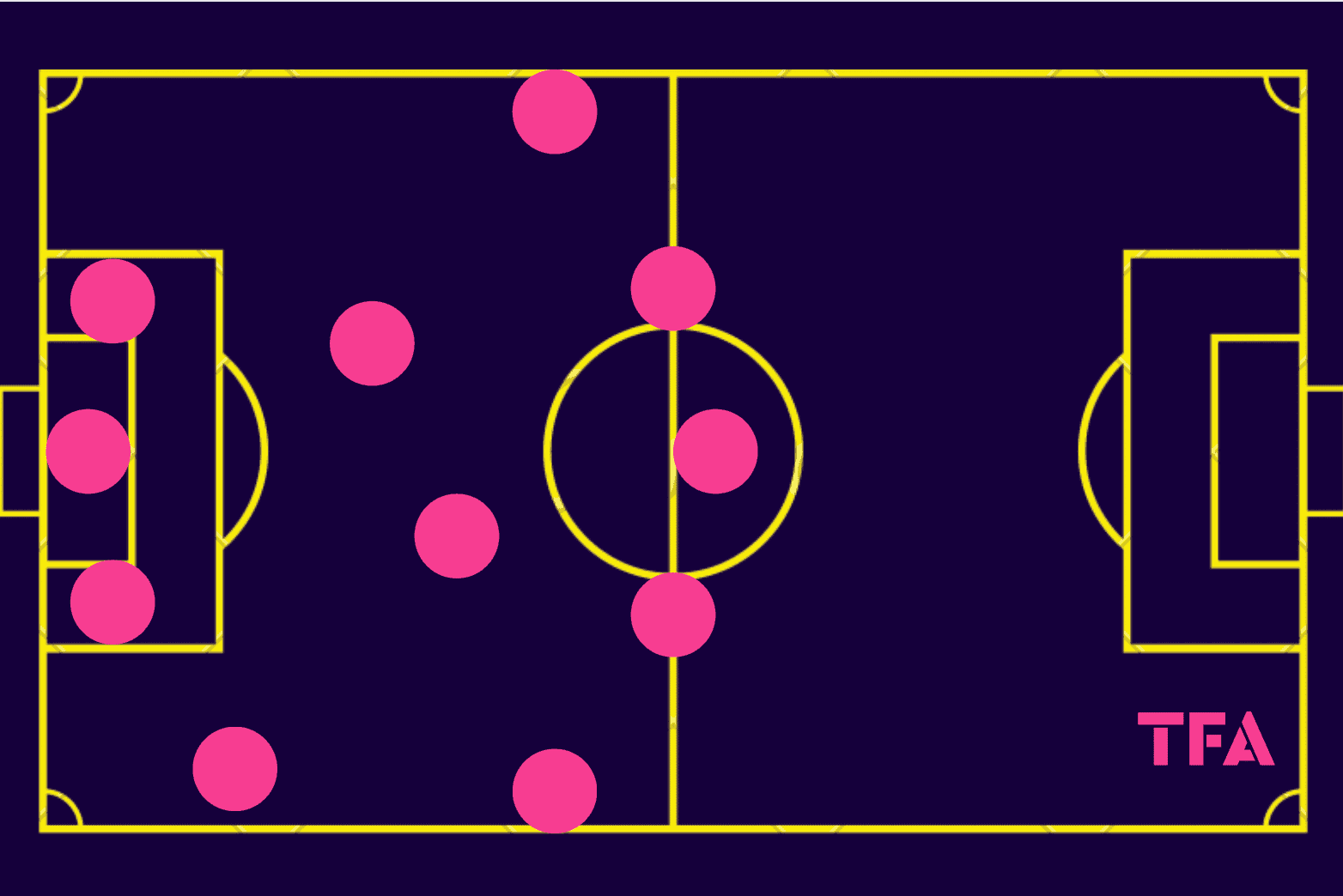
When three centre-backs are deployed, Reims still split two on either side of the goalkeeper, usually the left centre-back and central centre-back, while the other — in this case, the right centre-back — moves out to more of a right full-back position.
In this case, both wing-backs will typically move higher into something of a five-man front line while the midfield, again, staggers — now with fewer bodies than before but still with the same aim of finding space to receive behind the opposition’s first line of pressure.
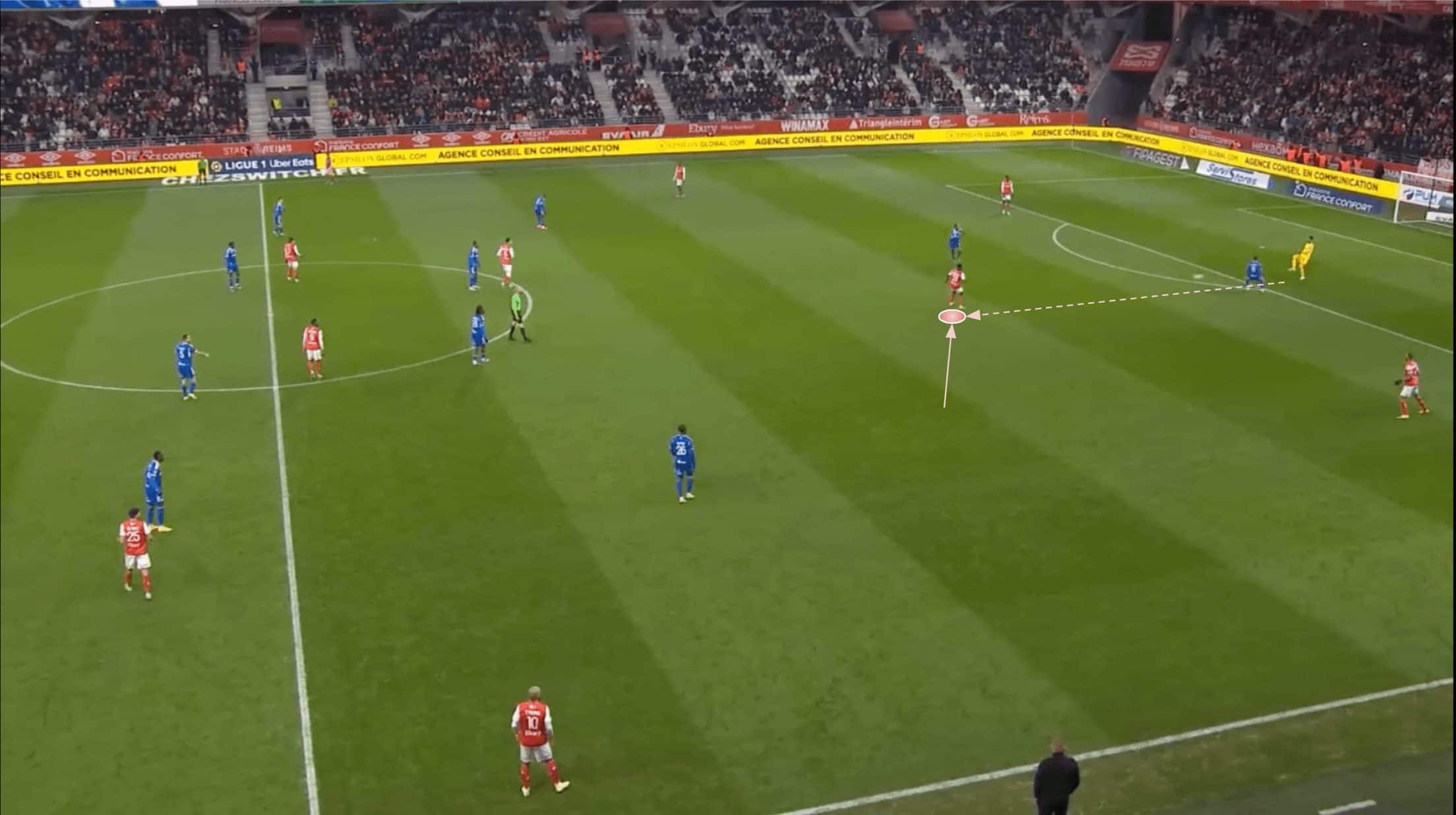
We see an example of this in-possession shape in figures 4 and 5, taken from Reims’ recent Ligue 1 clash with Strasbourg. In this case, holding midfielder Azur Matusiwa does well to find space and create a viable passing angle behind the opposition’s pressing forwards. As he receives, he starts to come under some pressure — still, he’s able to move the ball out to the left centre-back alongside him moving forward.
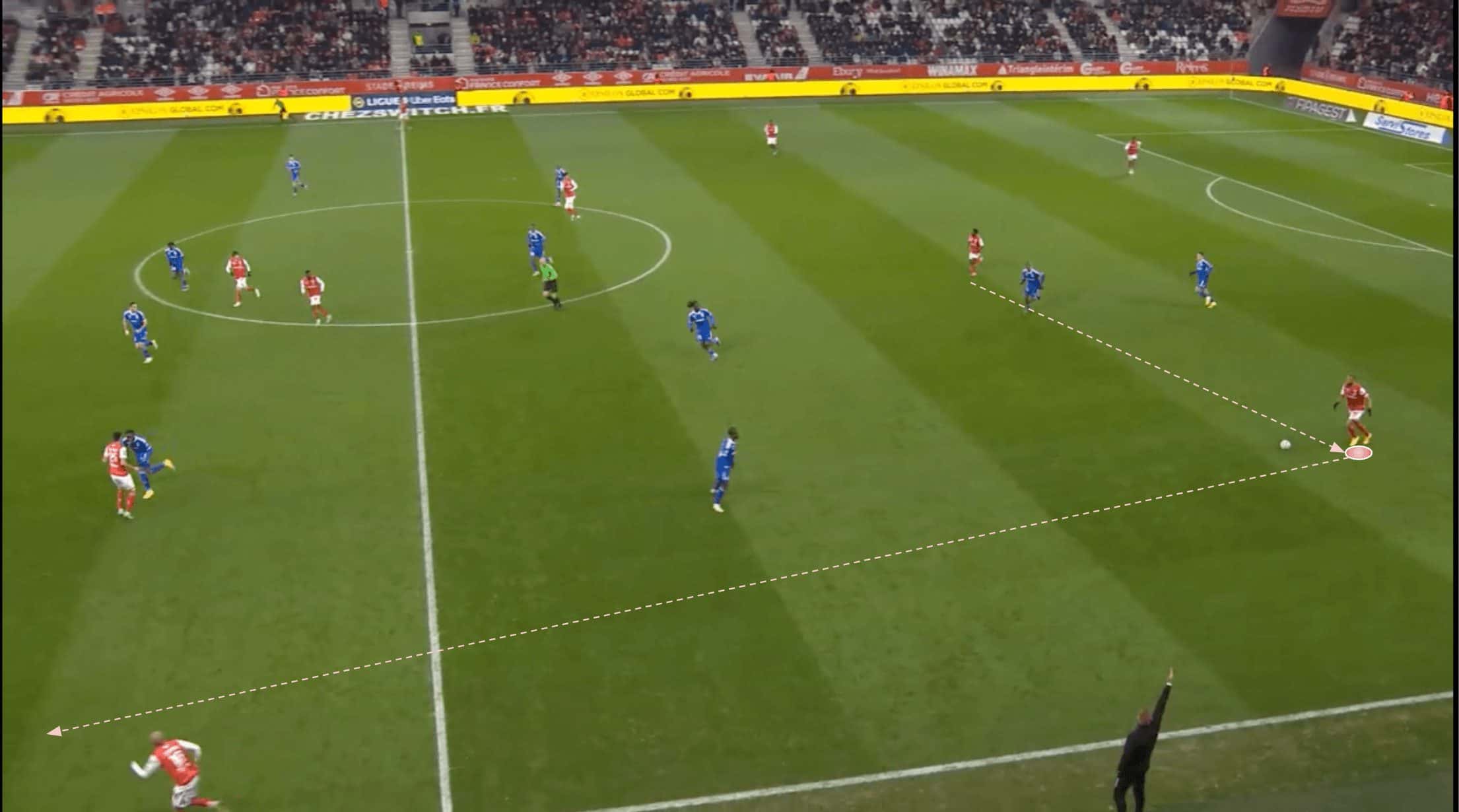
From there, the left centre-back can spot the probing run being made on the left and fires a ball over the top into the runner’s path.
Another notable aspect of figures 4 and 5, as we move into our next section, is which players are occupying which positions. In this case, the midfield duo is formed by Matusiwa and Amir Richardson. At the same time, Teddy Teuma — a central midfielder out of possession — has drifted to the left wing to become the receiver for this long ball from the left centre-back. Meanwhile, De Smet has moved into the left half-space just inside the overlapping Teuma.
Positional freedom
This highlights a key principle of Still’s tactical approach with Reims in possession: positional freedom. The likes of Teuma, Ito, Daramy, Diakité and Munetsi have enjoyed heaps of this in the 2023/24 campaign, and there have been plenty of instances when they’ve benefitted significantly from this approach, including the example above, which depicts, in particular, how Teuma thrives within this system.
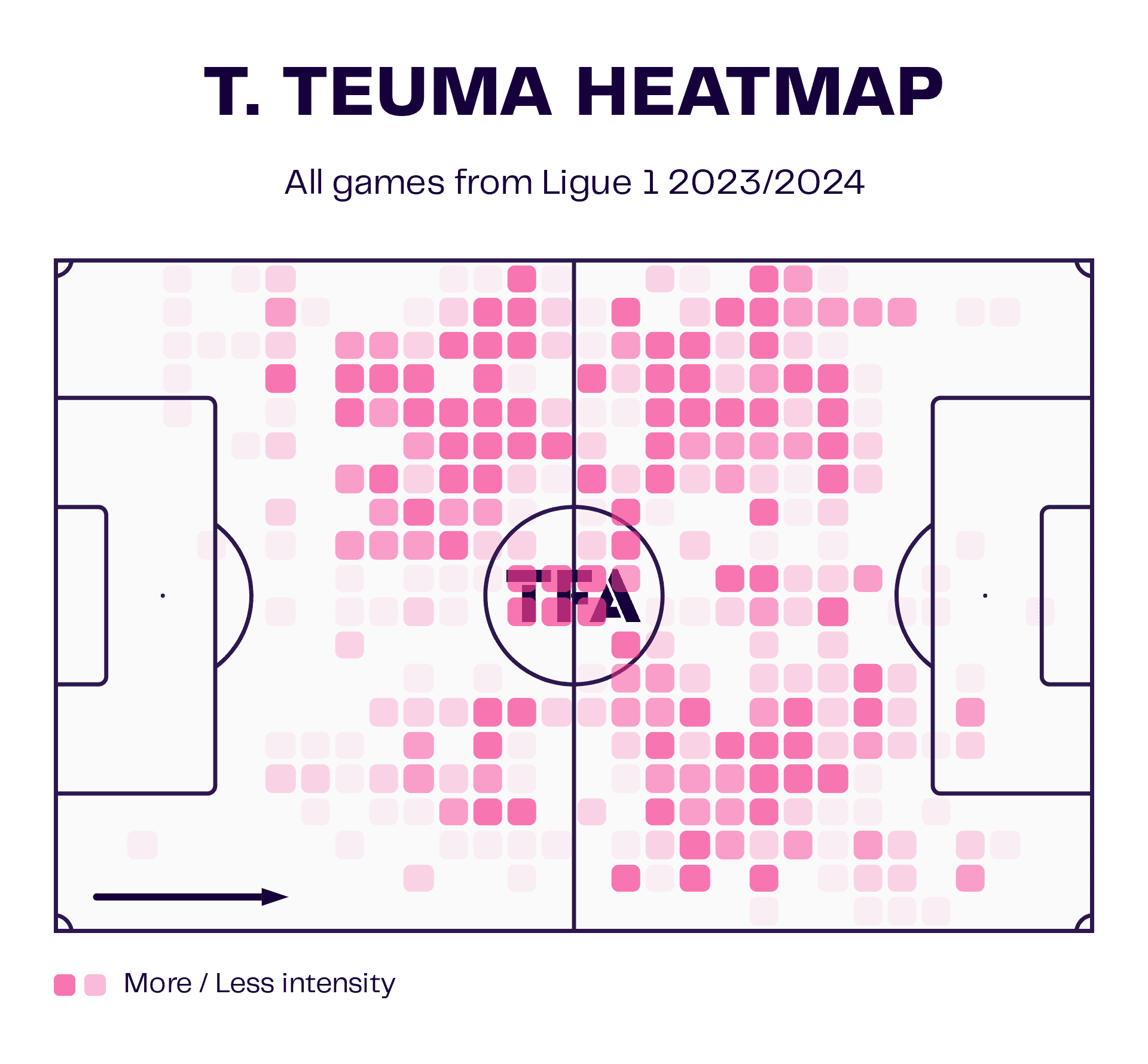
Figure 6 features Teuma’s heatmap from the current season, and it’s evident from a quick glance that the 30-year-old midfielder has popped up all over the place this term.
This heatmap could easily be from any given game, not just the season as a whole, because of Teuma’s tendency to float about and pick up space where available without the constraints of major positional responsibility. Matusiwa and the back three provide a solid base of four behind, and, in some cases, Richardson acted similarly, though he also had the license to roam.
Teuma, though, will constantly roam about, sometimes dropping deep, sometimes occupying a ‘10’ position, sometimes moving into the half-spaces and sometimes moving out to the wings. He’ll look around and move where he believes he’s most useful at that moment in terms of offering a passing option and what he can do afterwards as a next step in the attack.
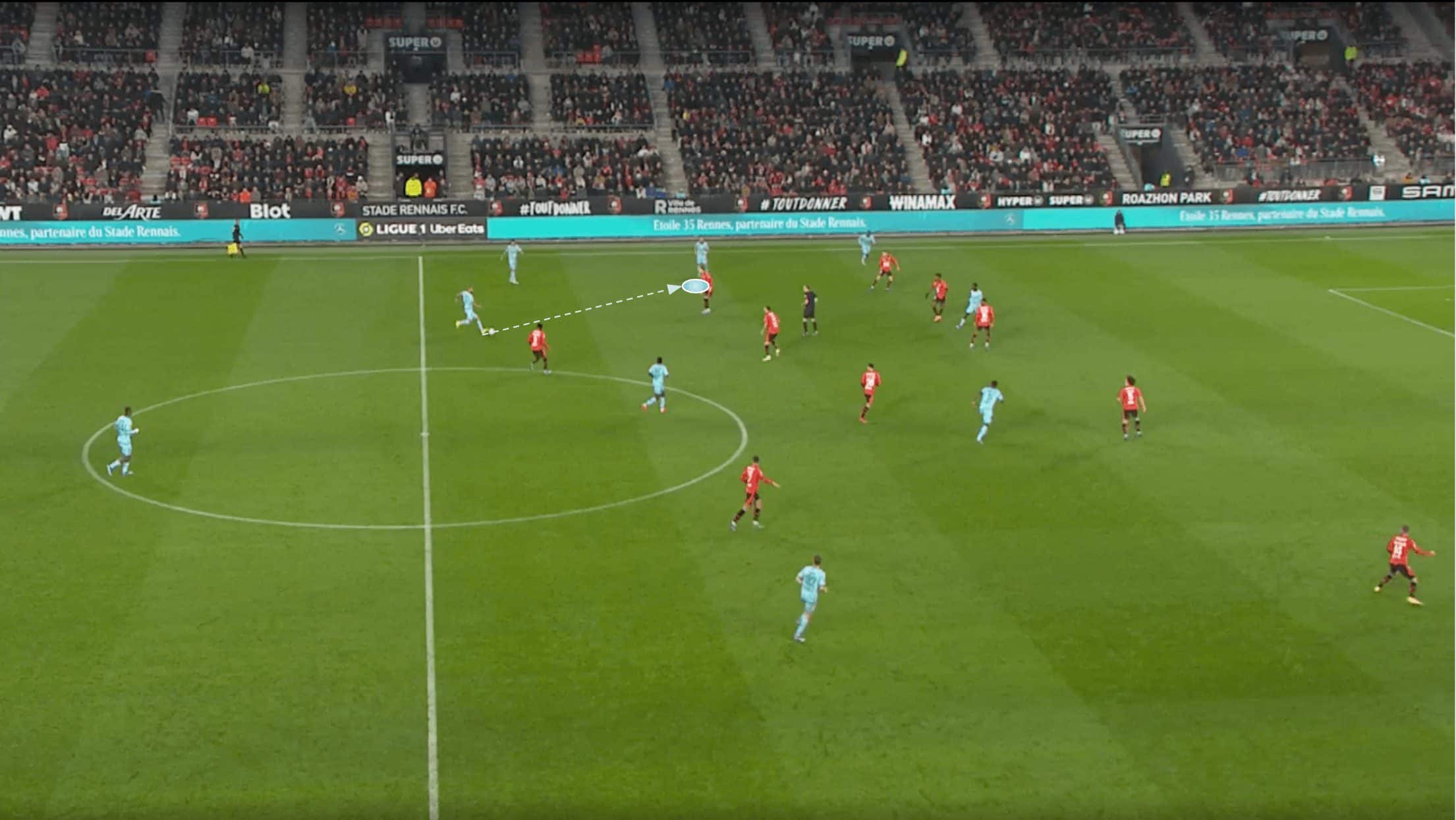
In this case, versus Rennes, we see Teuma after having moved wide once more, occupying some space just outside the opposition’s defensive structure.
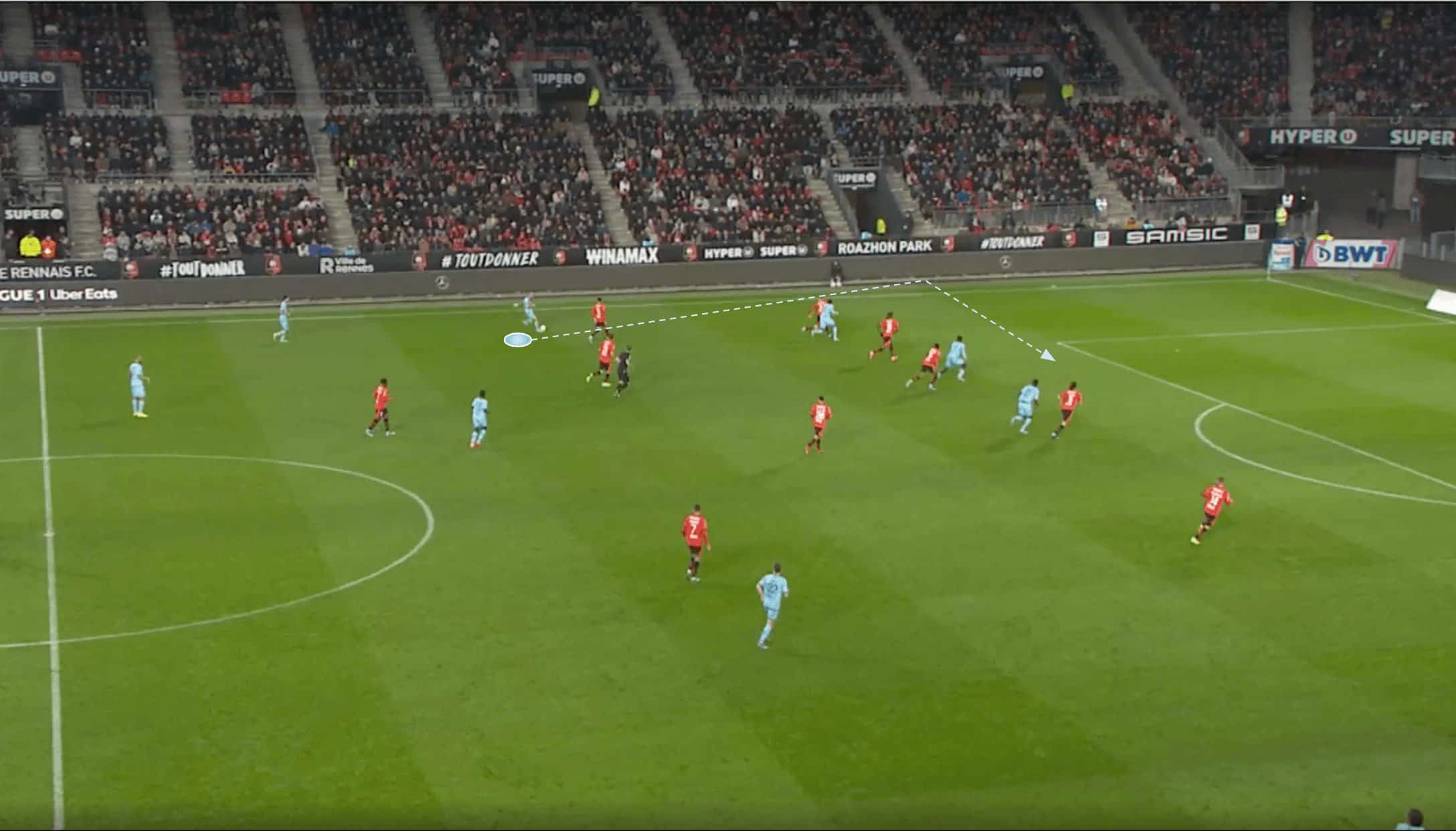
After receiving, Teuma plays a lobbed pass aiming for the runners moving in behind the opposition’s backline. However, the pass is intercepted before it reaches its intended target. Nevertheless, we can see from this short example where Teuma’s mind is at in terms of his movement, constantly thinking of where he can most benefit the team as they move from progression to chance creation.
Still’s in-possession system relies on players interpreting the space around them well and moving into positions where they can be most useful as they aim to quickly transition from the progression phase to the chance creation phase. This suits Teuma well, and as a result, he’s been a vital component of Les Rouges et Blancs’ approach with the ball in 2023/24.
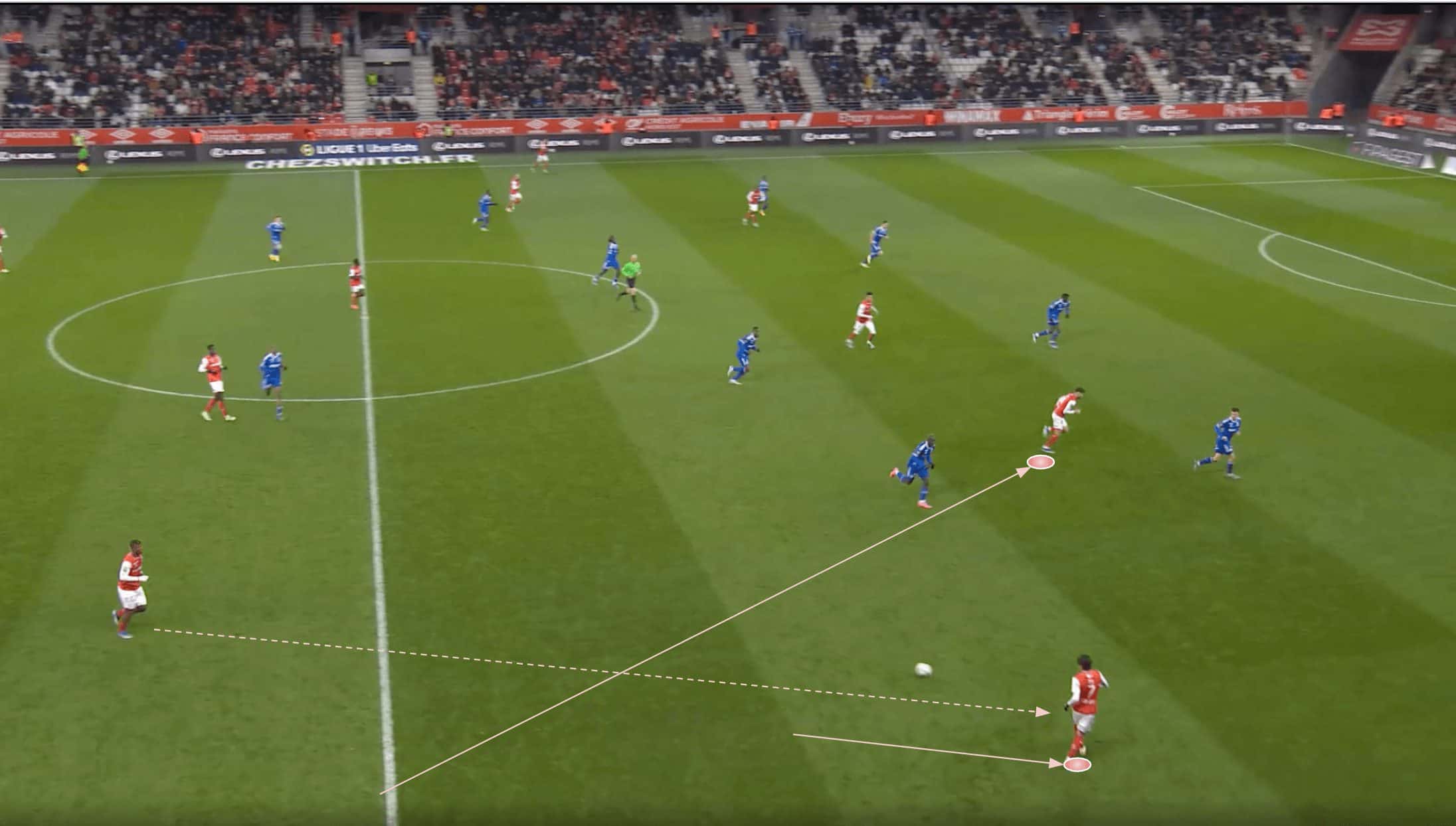
It’s not just Teuma who enjoys this level of freedom from positional constraints; we’ve seen the majority of Reims’ players exercise their ability to roam around and occupy different positions, interchanging with one another and constantly giving the opposition fresh challenges.
In figure 9, Ito receives from the right centre-back out wide while the right wing-back in this game, Maxime Busi, occupies the right half-space — similar to what we saw from De Smet back in figures 4 and 5.
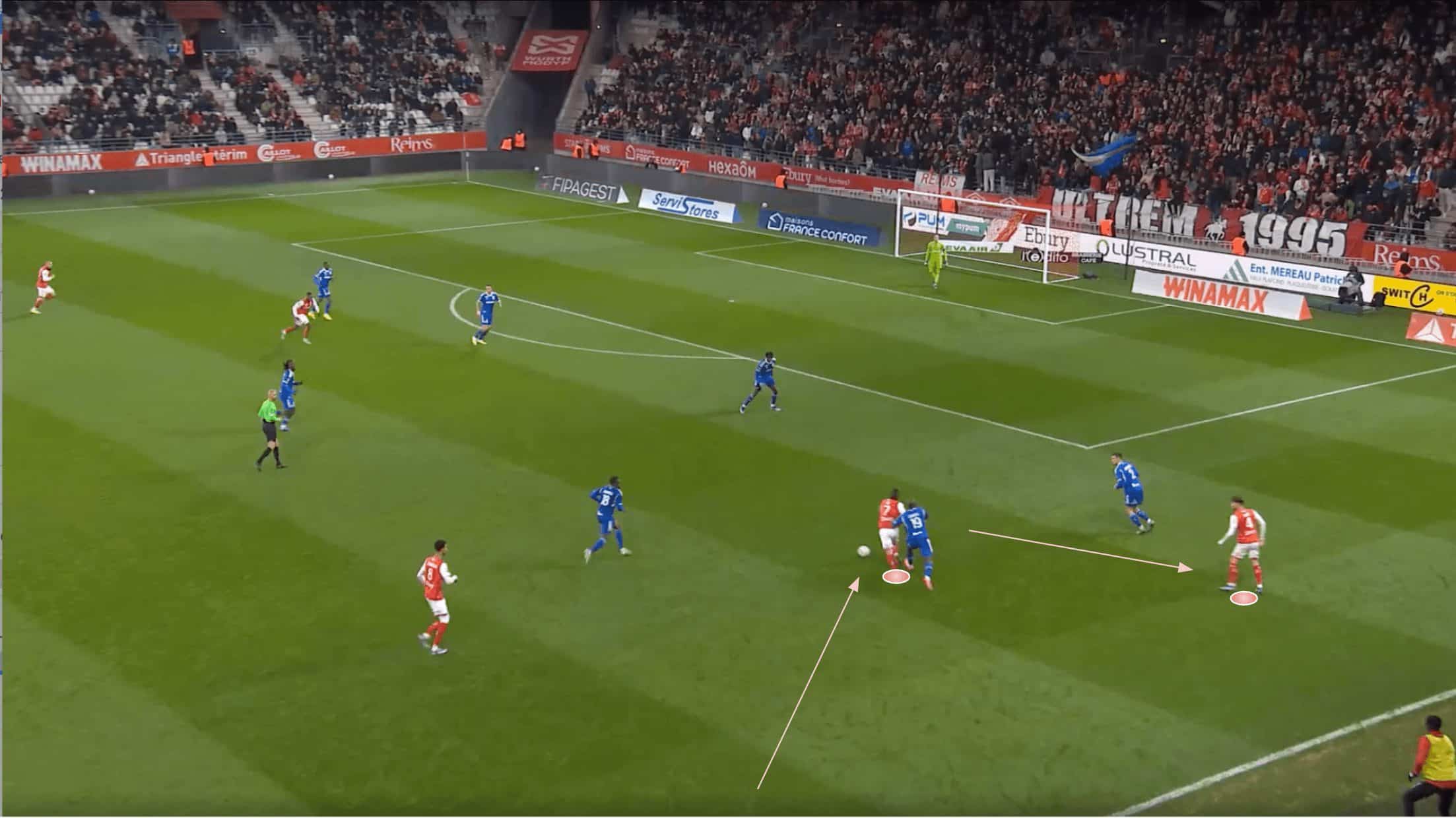
As play moves on, we see Ito carrying the ball inside, taking it past the midfielder who approached him as he now bears down on the backline. At the same time as Ito moves inside, Busi moves outside, ensuring Reims continue offering width on the right to keep the opposition’s backline stretched.
As Busi moved outside here, he dragged the opposition left-back with him, which created a gap in the defence for Ito to target with his dribble after beating the left midfielder. As play moves on from here, Ito slides a pass into that gap between the opposition’s left-back and left centre-back, highlighting some benefits of he and his teammates’ constant movement and positional interchange — they become more and more difficult for the opposition to mark and track as they roam about, enabling players to find space off the ball and/or creating gaps in the opponent’s defensive structure.
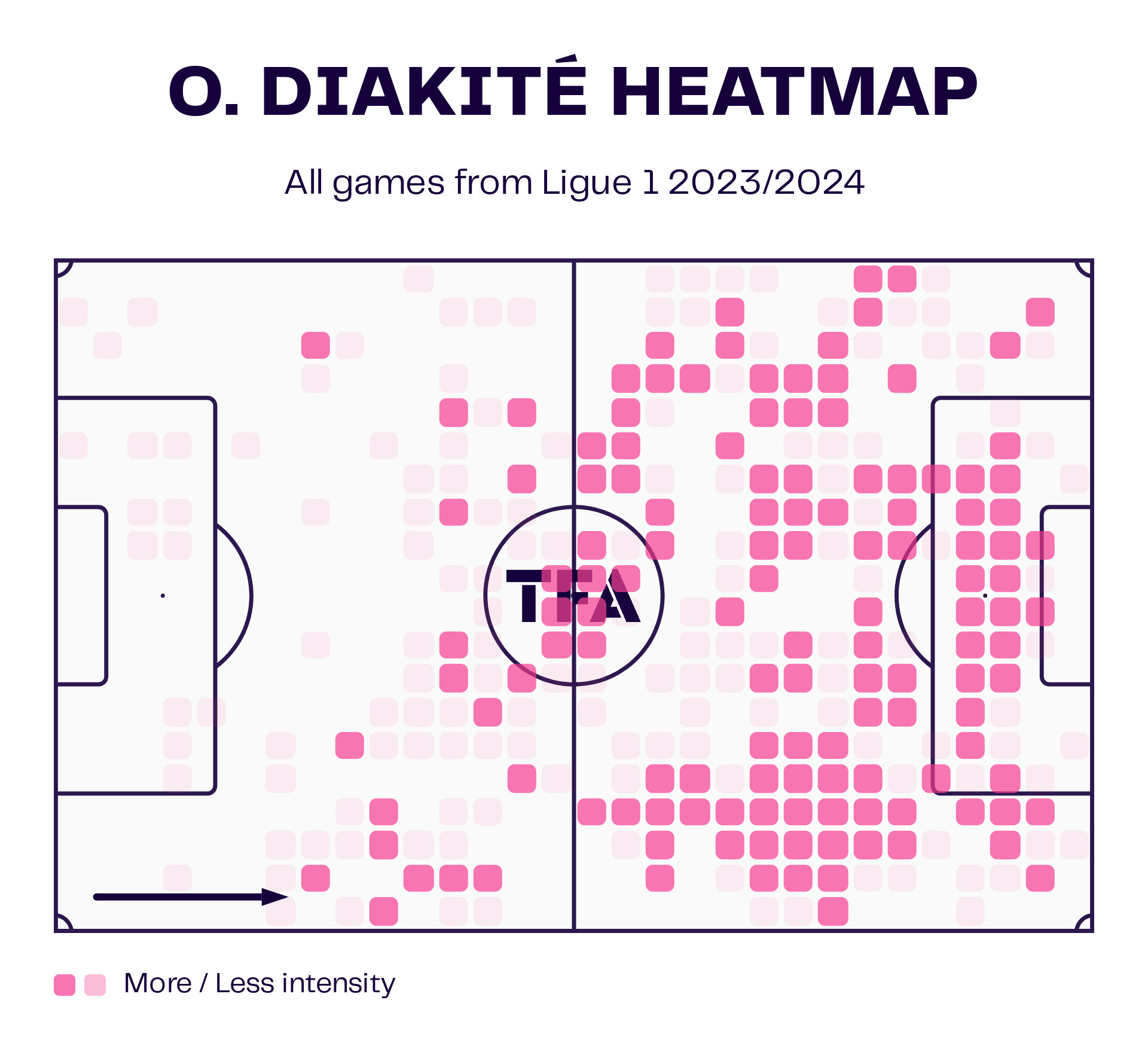
Diakité, who usually occupies the centre-forward position for Reims, has also roamed about quite frequently this term, often dropping into the half-spaces or even moving into wide areas where he often likes to receive with his back to goal and a defender tight so he can use his strength and back into the defender before rolling off of him and getting away in behind.
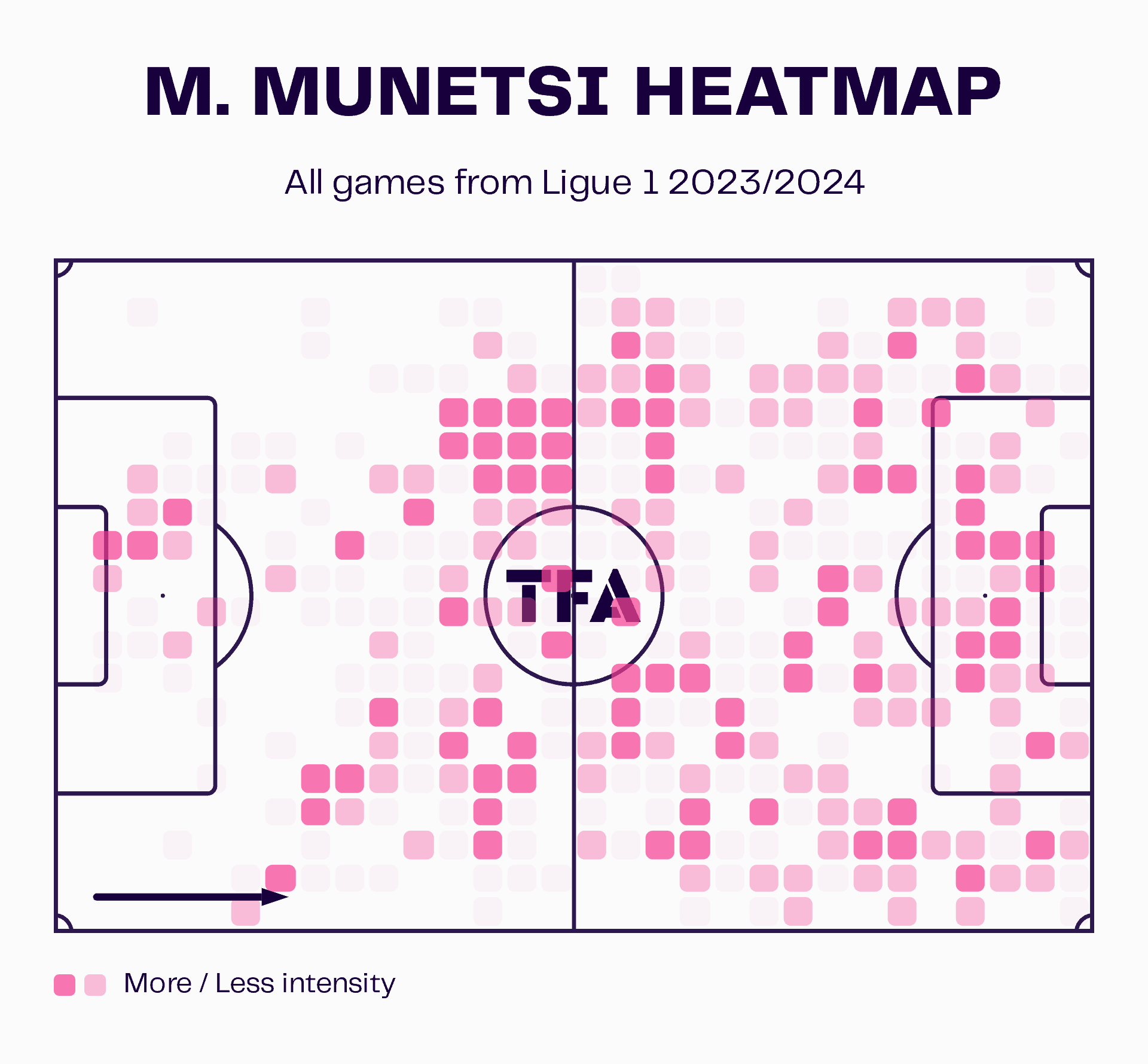
Munetsi, who often plays in the right central midfield position we saw Richardson occupying versus Strasbourg, is another who has benefitted a lot from the positional freedom afforded to him by Still.
The 27-year-old often drops deep during the build-up and remains central in the progression phase; however, once things move into the chance creation phase, Munetsi loves making late runs into the box, where he can offer an aerial threat.
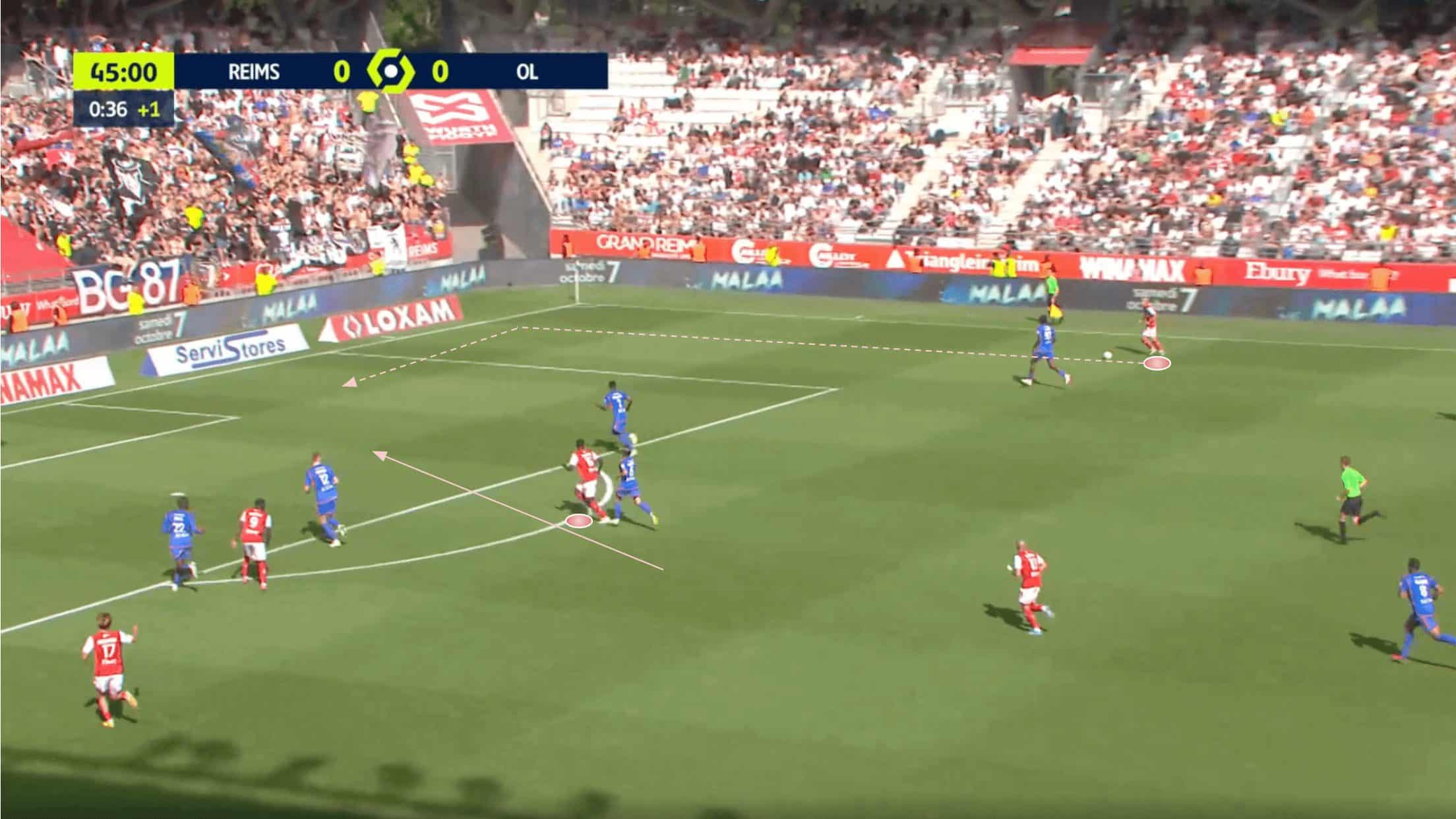
We see one example of when Matusiwa did exactly this in figure 13. As Ito lined up the cross on the right wing, the central midfielder made his way into the box, ending up in a great position to meet the ball and send it goalward.
As Matusiwa went forward, Teuma remained deep, ensuring the team maintained a balance in their shape — Still gives his players a lot of freedom, but with that then also comes responsibility. Overall, Les Rouges et Blancs have thrived under this approach in 2023/24, which is just as much a credit to the players and their excellent application of their roles within this system as it is a credit to Still for being so comfortable with relinquishing control and empowering his players.
Dribbling and crossing
Moving on to chance creation itself, while the positional freedom described in the previous section is undoubtedly crucial to Reims in this phase, it’s not the only thing worth analysing.
Reims have played the fifth-most crosses in Ligue 1 this term (13.64 per 90), and as we saw in figure 13, they have proven to be very valuable sources of goalscoring opportunities at times.
As well as that, Reims have made the third-most dribbles (28.44 per 90) in France’s top flight this season and boast the greatest dribble success rate (56.6%) in their division.
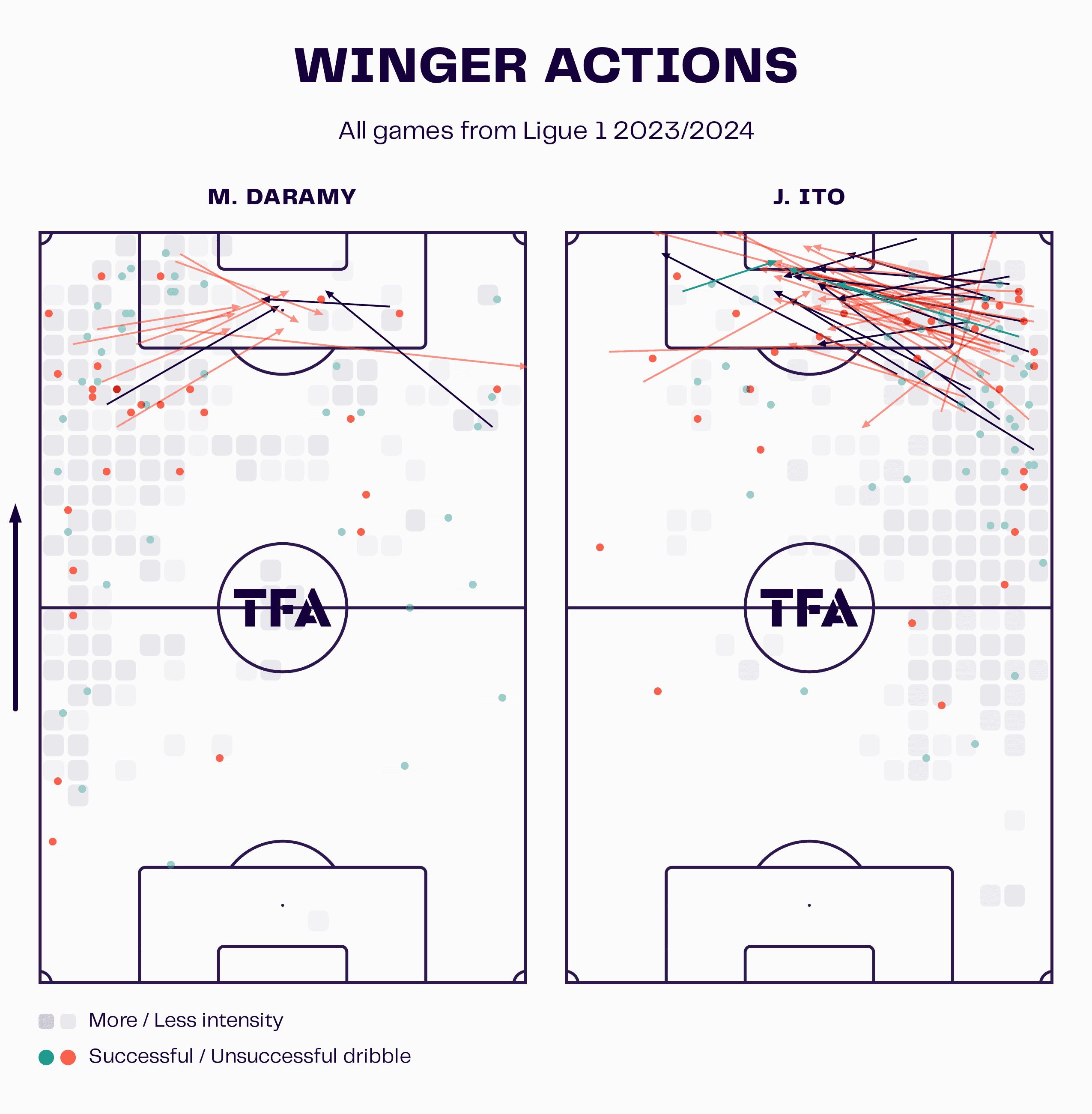
Junya Ito and Mohamed Daramy have been crucial in both the crossing and dribbling areas for Still’s side this term. Figure 14 shows both of their ‘winger actions’ from the 2023/24 campaign, including a heatmap showing where their successful and unsuccessful dribbles were performed and where their crosses have come from.
Plenty of Ito’s crosses, in particular, come from further out on the wing, but both players love to carry the ball towards the byline and cut the ball back into a shooting position from there, which can create highly valuable goalscoring opportunities.
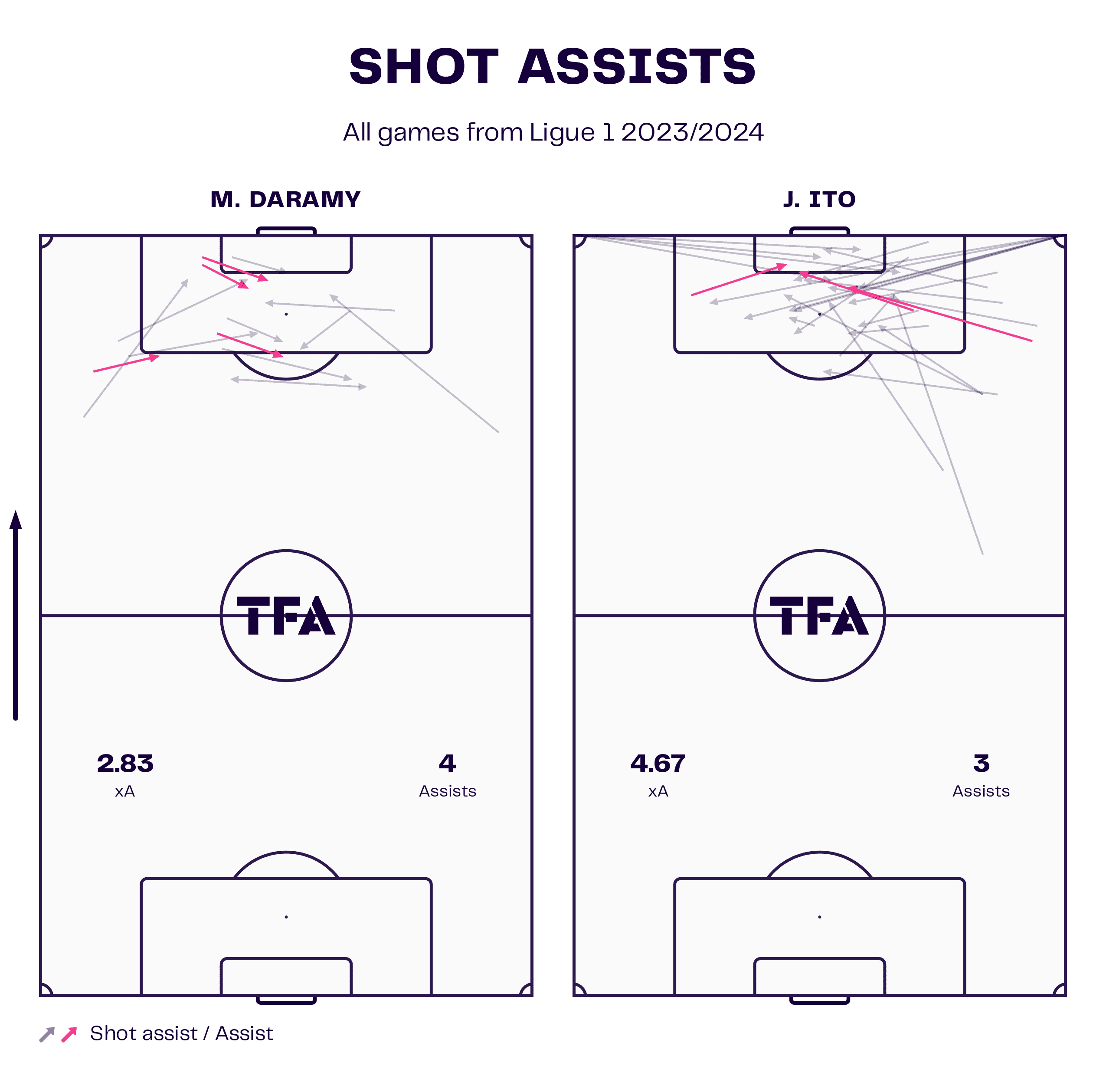
Figure 15 displays both players’ respective shot assist maps from the current campaign, with plenty of their shot assists coming from cutback balls played into the centre of the box.
In total, this creative duo has made a combined seven assists this term, generating a combined 7.5 xA.
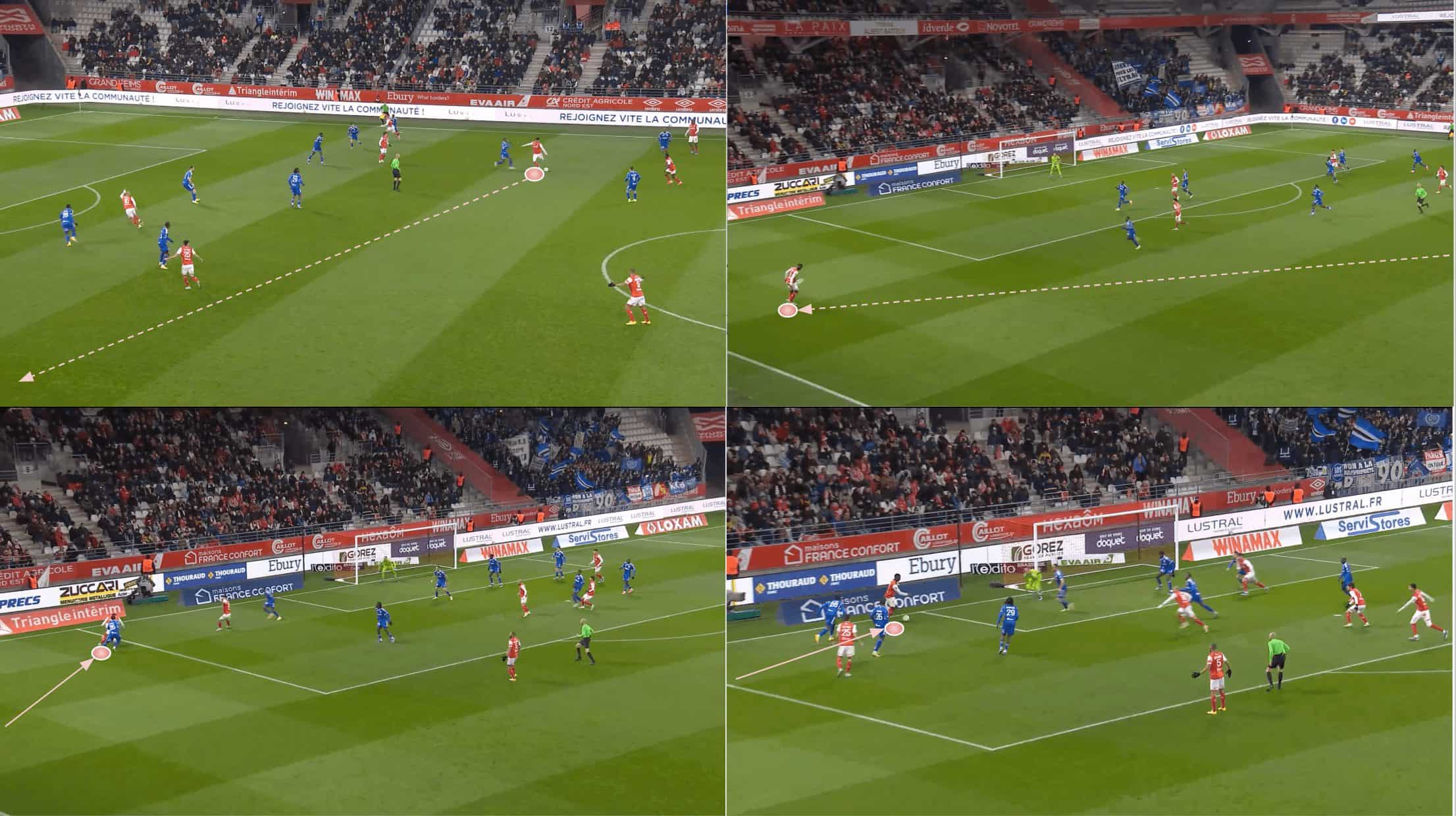
As displayed by the winger actions maps in figure 14, many of Ito’s dribbles start deeper than Daramy’s. We already saw an example of Ito’s dribbling back in figures 9-10 when he received wide just inside the opposition’s half before carrying inside. Now figure 16 shows an example of Daramy’s dribbling from this same game.
Remaining wide on the left, Daramy gets on the end of a crossfield ball from the right and controls excellently before going past two defenders who move out to approach him as he progresses into a dangerous position for a cutback cross.
Daramy exhibits excellent agility, very quick feet and blistering pace, making him a very dangerous dribbler when isolated 1v1 with the defender like he was here.
Conclusion
To conclude this tactical analysis piece, it’s clear that Still’s philosophy of positional freedom and player empowerment has worked wonders with this Reims team in 2023/24, hence why they remain outside contenders for UEFA Champions League places almost at the midway point of the campaign.
Even if Champions League qualification remains a highly optimistic target, they could well aim for European football should they maintain the form they’ve shown thus far in 2023/24, as Still has managed to quickly gel several new players together into a potent attacking unit.





Comments